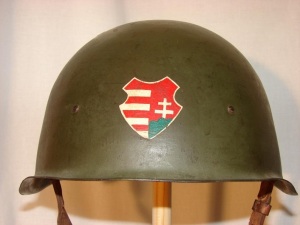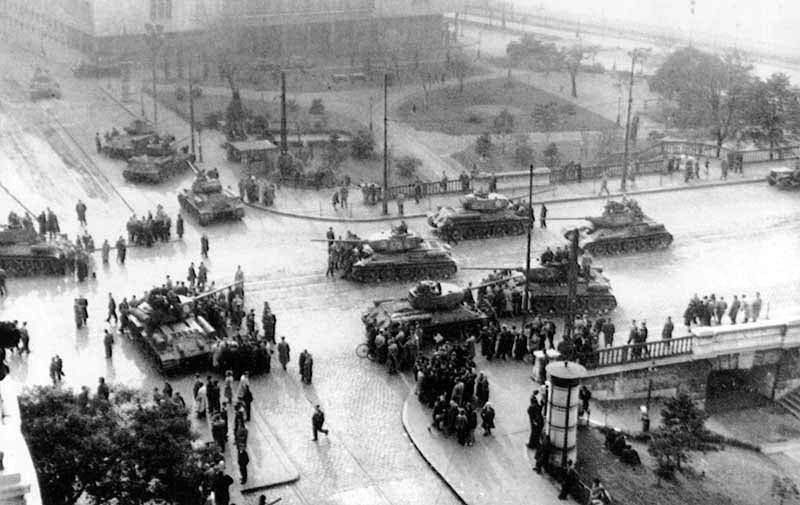Following the death of Josef Stalin in March 1953, the member nations of the Warsaw Pact faced an existential crisis. In the wake of Nikita Khrushchev’s denunciation of Stalinism and the cult of personality surrounding him in 1956 during the Soviet Communist Party’s Twentieth Congress these nations, most notably Poland and Hungary revolted against what was increasingly seen as Russian imperialism. In the Polish city of Poznan, worker demonstrations destabilized the established Communist leadership and allowed for reformers to come to the fore. These demonstrations were ultimately suppressed but this was not the case in Hungary in 1956.
Hungarian Communists sought increasingly to exercise independently of the Soviet leadership, calling upon a proud common identity in their country. They felt that the Soviets had betrayed the revolution and were no longer concerned with the worker and preserving national sovereignty, seeking imperial ambitions and greater power. In October 1956, led by the demonstrations of students in Budapest, workers began creating Worker Councils to afford themselves greater rights and autonomy in their individual factories. Newly appointed Prime Minister Imre Nagy, addressed his people announcing a new government in Hungary in face of Soviet occupation of Budapest. He sought greater independence, freedom of expression and national identity in the Communist party in Hungary. “The government wishes to rest in the first place on the support of the fighting Hungarian working class, but also, of course, on the support of the entire Hungarian working population.”
He alluded to the proud 1,000 year history of Hungary and called for the reestablishment of the Emblem of Kossuth, a historical symbol of Hungarian identity “for the restoration of the Emblem of Kossuth as the national emblem and the observance of March 15 once again as a

national holiday.” in a radio address on October 28, 1956. At the time the Soviet officials had determined to recognize the new government, however reports from Hungary reversed this decision. Betrayed, Nagy frantically declared himself leader of the national resistance as Soviet tanks and troops tore into Hungary and regained control of Budapest through force, he stated: “Our troops are fighting. The government is in its place.” However the power of the Soviet troops soon overwhelmed the new government and the patriotic citizens in the streets.

The actions taken by the Soviets, in the face of reasonable reforms offered by Hungarian Communists, only heralded the many crises that were to come in Eastern Europe. Where Soviet brute force was to enforce their conception of Communism over increasing calls for a more nationalistic conception of Communism. The images and sounds of Soviet tanks rumbling through Eastern European cities, coupled with the mass singing of national and patriotic songs by the citizens would prove to be a very powerful image in Western perception of the USSR.
Featured Image: Source


Most of these countries saw the De-Stalinization process in Russia and thought why can’t we get some more freedom and greater autonomy? Like you pointed out the Soviet Union was nowhere ready to let go of its grip over Eastern Europe. Great post Kevin – very detailed and well researched.
LikeLike
I discussed this a little in my blog as well. It is interesting to see the reactions of other states under Soviet control to Stalin’s death. You did a great job of analyzing how this affected Hungry and what the Soviet Union did to maintain power.
LikeLiked by 1 person
I like all of the great photos you found and the detail in there. Even with Stalin gone, the Soviet government was not going to let go of its influence in Eastern Europe; they were way too geopolitically important.Nice job!
LikeLike
It is very interesting to me that the Hungarian communists saw the Soviets as the ones who were betraying the revolution. The Russian revolution of 1917 was ostensibly the beginning of an international revolution of the working class that would abolish national boundaries. The nationalistic communism of the Hungarians is the exact opposite of that. I think you did a great job explaining the situation in this post.
LikeLike